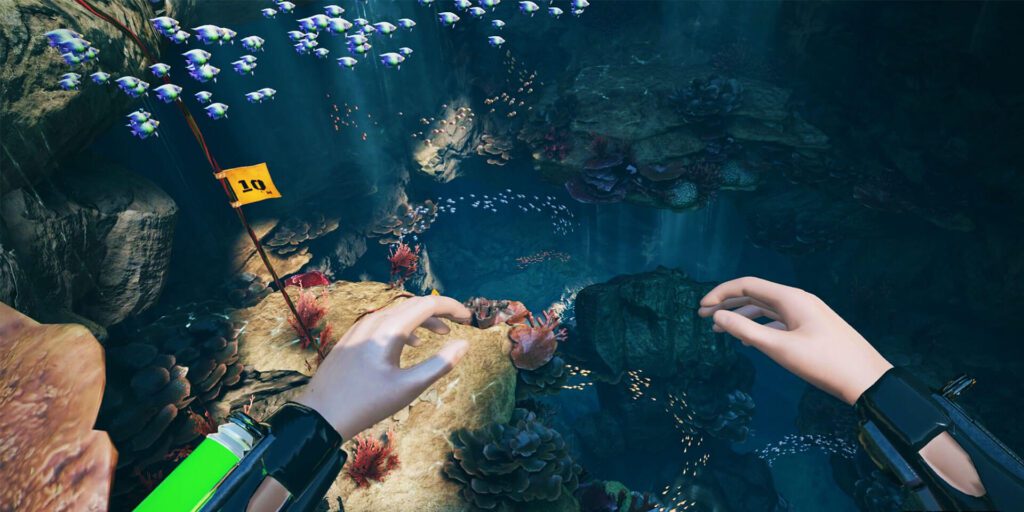Virtual reality (VR) technology has revolutionized the gaming industry by allowing developers to create immersive and engaging game environments. To create these environments, developers must consider several factors such as the game’s genre, target audience, and level of interactivity. They also need to create a sense of presence by using realistic graphics, sound design, physics, and interactions. Building compelling game mechanics is equally important to keep players engaged. Finally, testing and refining the game are crucial to ensure that it is engaging, fun, and intuitive to play.
Exploring the World of Virtual Reality: A Guide to Creating Engaging Game Environments
Virtual reality technology has revolutionized the gaming industry. It has allowed developers to create immersive and engaging game environments that transport players to worlds that were once only possible in their imagination. However, creating these environments and experiences is not an easy task. It requires a combination of technical knowledge, artistic skill, and creativity. In this article, we will explore the world of virtual reality and provide a guide on how to create engaging game environments.
Understanding Virtual Reality
Virtual reality is a computer-generated environment that simulates a real-world environment or creates an entirely new world. It is typically experienced through a headset that is worn on the head, which tracks the player’s head movements and translates them into the virtual environment. The headset also has built-in display screens that project the virtual world into the player’s eyes, creating an immersive experience.
Creating a Game Environment
Creating a game environment is the first step in developing a virtual reality game. In this stage, developers create the world that the player will explore. There are several factors to consider when creating a game environment, including the game’s genre, the target audience, and the level of interactivity.
The Game’s Genre
The game’s genre will play a significant role in the type of environment that is created. For example, an action game may be set in a post-apocalyptic world, while a puzzle game may take place in a whimsical fantasy world. Developers must consider the genre of the game and create an environment that fits within that world.
Target Audience
The target audience is another critical factor to consider when creating a game environment. Developers must tailor the environment to appeal to the target audience. For example, a game aimed at children would have a colorful and interactive environment, while a game aimed at adults may have a more realistic and immersive environment.
Level of Interactivity
The level of interactivity is another important factor to consider when creating a game environment. A highly interactive environment will provide players with a more engaging experience. For example, if the game is set in a forest, the player could interact with objects in the environment, such as trees, rocks, and animals.
Creating a Sense of Presence
Creating a sense of presence is critical when developing a virtual reality game environment. Presence refers to the feeling that the player is fully immersed in the virtual environment. There are several techniques that developers use to create a sense of presence, including:
1. Realistic Graphics – Realistic graphics are essential to creating a sense of presence. Developers must ensure that the environment is visually stunning and realistic to draw the player in.
2. Sound Design – Sound design is equally important in creating a sense of presence. The sounds in the environment must be realistic and match the visuals.
3. Physics and Interactions – Physics and interactions are crucial to creating a sense of presence. Objects in the environment must behave realistically when touched, thrown, or interacted with.
Building the Game Mechanics
The game mechanics are the rules and systems that govern the gameplay experience. Creating compelling game mechanics is essential to keeping players engaged in the game. The game mechanics must be intuitive, easy to understand, and challenging enough to keep players engaged. Some factors to consider when building game mechanics include:
1. User Interface – The user interface must be easy to use and understand. Players should be able to navigate the game world seamlessly.
2. Progression System – The progression system must be well-balanced. Players should feel that they are progressing at a reasonable pace.
3. Puzzles and Challenges – Puzzles and challenges are essential to keep players engaged. They must be challenging enough to keep players interested, but not so difficult that they become frustrating.
Testing and Refining the Game
Testing and refining the game is a crucial step in the process of creating a virtual reality game environment. Developers must test the game to ensure that it is engaging, fun, and intuitive to play. Playtesting involves giving the game to players and observing their behavior and responses. The feedback from playtesting is used to refine the game and make it better.
Conclusion
Creating an engaging game environment for virtual reality is a complex task that requires a combination of technical knowledge, artistic skill, and creativity. Developers must consider several factors when creating a game environment, including the game’s genre, the target audience, and the level of interactivity. Creating a sense of presence and building compelling game mechanics are also essential to keeping players engaged in the game. Finally, testing and refining the game are crucial in creating an immersive and engaging game environment that players will enjoy.
